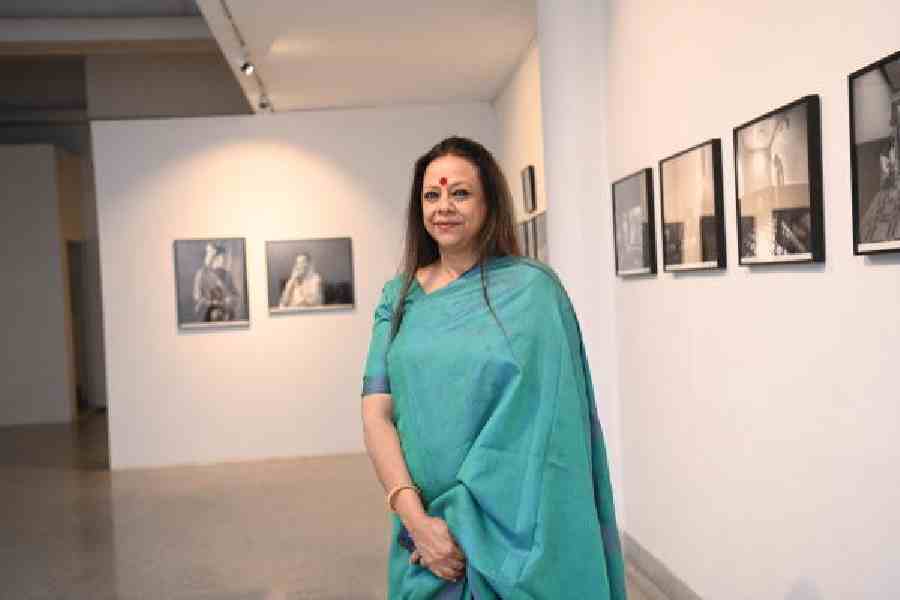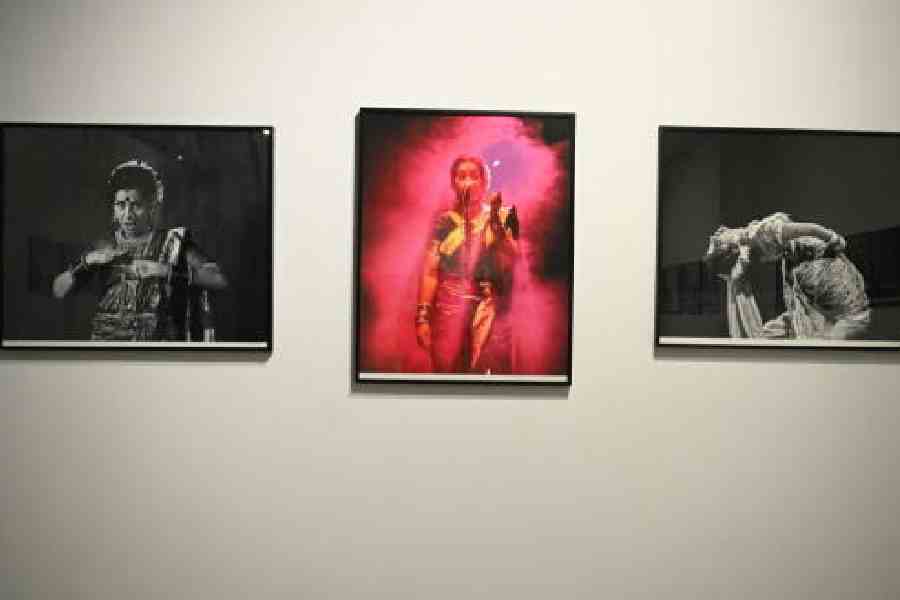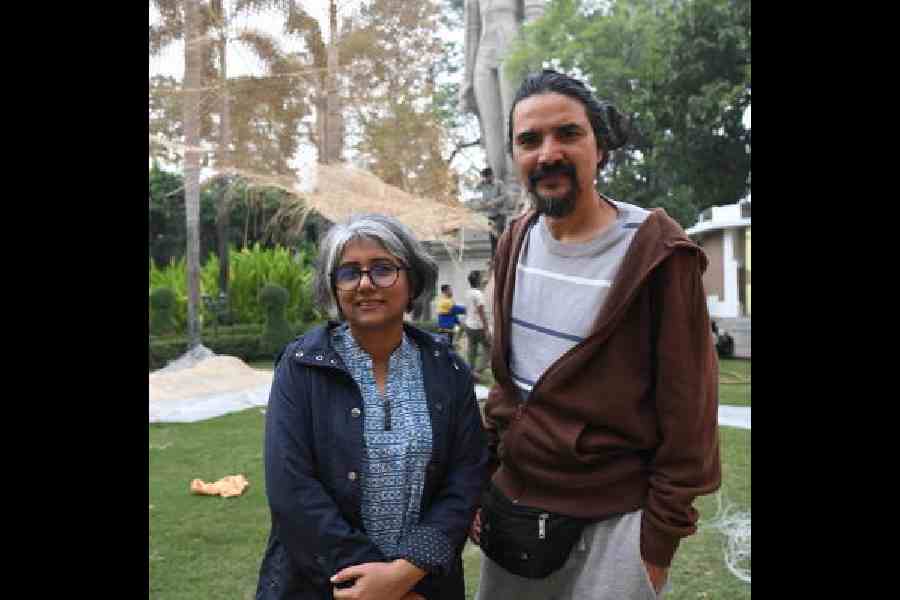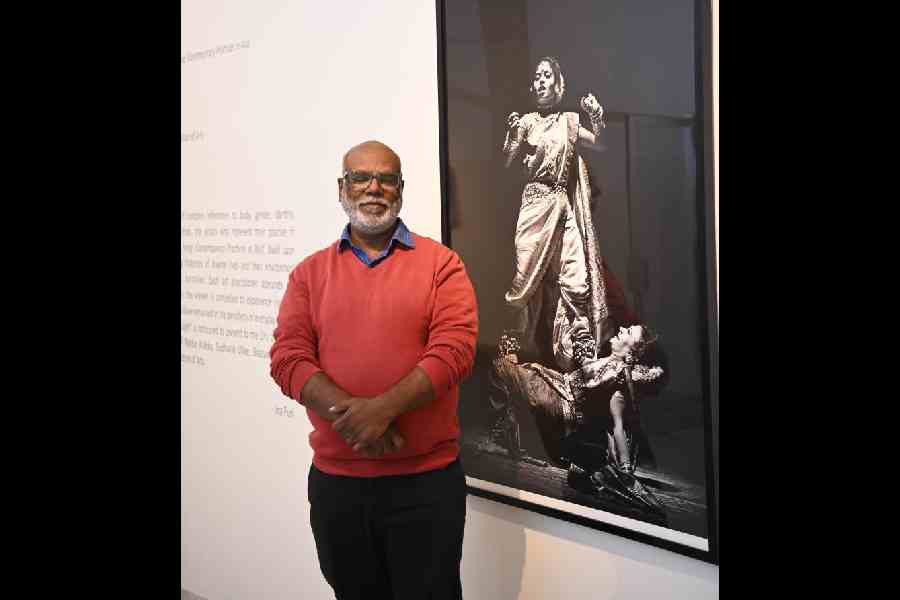As part of its 57th anniversary, Birla Academy of Art and Culture showcased an exhibition titled ‘Stories of Light and Song: Contemporary Art Practices in Asia’. Curated by Ina Puri, the group show featured artists from India and Bangladesh, saluting the spirit of humanity through artworks ranging from installations to photographs and multimedia. A series of talks with the participating artists and performances added dynamism to the exhibition which will end on February 9.

Gidree Bawlee Foundation from Balia, Thakurgaon, Bangladesh, who works with different sustainable mediums in the neighbouring country, collaborated with artists from Bengal to present ‘Waves’, an installation work resplendent of bamboo weaving. The site-specific installation at the lawns of the Birla Academy introduced the Bengal counterparts to the new technique of weaving bamboo that involves working not on a linear surface but on mounds made on the ground to give the material a beautiful curve or wave. “We are a creative collective and we do a lot of collaborative work and here we have got a team of bamboo artists from our village and a team of five from Birbhum. The installation involves a bamboo weaving technique, and is like a wave colliding. The beauty of it is that it never goes according to plan. This is the first time we are working outside the country on a site-specific project and there are lot of challenges when working outside the county,” said Shadhin Kamrazuddin and Salma Jamal Moushum, co-pilots of Gidree Bawlee Foundation.

Social documentary photographer Sudharak Olwe’s collection of photographs on the first floor of the art gallery, monochrome and coloured, old and latest, captured from 2003 to 2021, presents the trajectory of Lavani dancers of Maharashtra. A total of 38 pictures on display capture the gaze, the grandeur, the nuances of the art and its changing landscape. Olwe, who was on his maiden exhibition in the city said: “I have photographed them for two decades and have observed how their lives and the art’s life have evolved. I keep going to the villages in Maharashtra where this art is practiced. A lot has changed since I started documenting them. From being performed in a theatre now and not on streets to other communities, including transgenders, joining the tribe, the changes have redefined the traditional art of Lavani which was looked down upon and practiced by one set of women.”

Gidree Bawle
Apart from the tangible exhibits of Olwe and Gidree Bawlee, the other two had a multi-sensory appeal. Artist BaaraanIjlal’s ‘Change Room’ is a travelling sound installation of voices belonging to people who express their fears and desires as they listen and absorb, while time and space yoked together form the background of Ranbir Kaleka’s haunting video ‘how far…’? Kaleka’s video that spotlights displacements is an elegy to the personal existential crisis that plagues displaced people everywhere.
“We are looking at harmony, unity and communities largely. I like the fact that everyone is speaking different languages. The Lavani performance, that form the central theme of Sudharak’s photo essay is in Marathi. Gidree Bawlee speaks Bengali, Ranbir and the theme song in his work is in Punjabi and Baran uses many voices. We can all try and do something that has the same end in sight. In this environment that is there in the country and universally, it is important through the darkness to show light. Contemporaneity requires museums and art institutions to engage in a dialogue with the world on an equal basis. ‘Stories of Light and Song: Contemporary Art Practices in Asia’ is brought to the Birla Academy with the hope that we can speak one universal language of inclusivity. The powerful, contemporary voices could be moving at different speeds, yet they move through the same historical time,” said curator Ina Puri.
